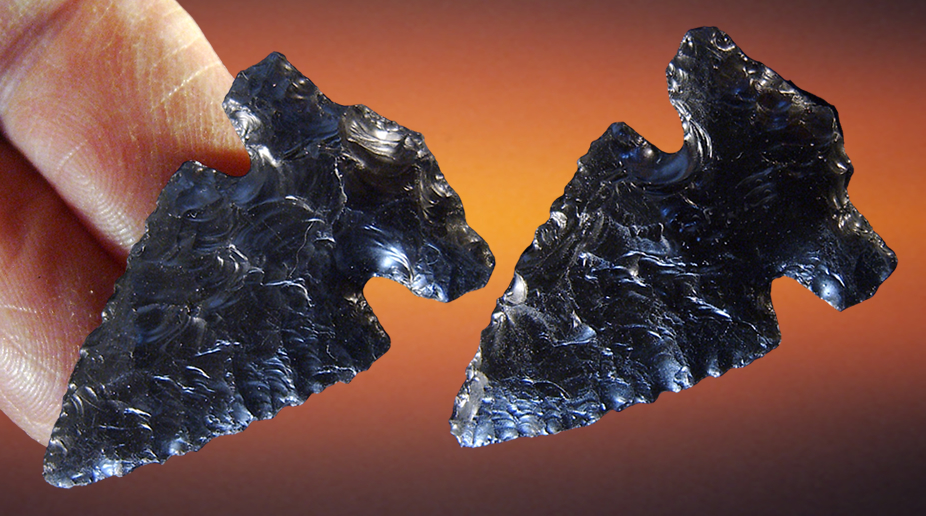|
NORTHERN SIDE-NOTCHED
POINT
DEMOSS BURIAL SITE
CASCADE PHASE
6,000 BP
ADAMS COUNTY, IDAHO
COPYRIGHT AUGUST 31,
2014 PETER A. BOSTROM

CAST ILLUSTRATED
CAST
#A-18
NORTHERN SIDE-NOTCHED
POINT
DEMOSS BURIAL SITE
CASCADE PHASE
6,000 YEARS BEFORE PRESENT
ADAMS COUNTY, IDAHO
This side-notched point
was
found in 1985 on the DeMoss burial site in west central Idaho. Fourteen
other side-notched points and 20 side-notched point preforms were also
found on the site. It represents one of a group of points that are
assigned to the northern side-notched cluster. However, it might be
difficult to identify specifically. As Noel Justice explains
(2002), "To little is known at present to differentiate new side-notched
types with discrete hafting attributes or tighten the definitions of
Bitterroot (points) and Cold Springs (points) to possibly differentiate
them from Northern (side-notched points)." Northern side-notched points
were named for examples found at Wilson Butte Cave in south central
Idaho. The type description matches several of the points found on the
DeMoss site.
The DeMoss site is a Cascade Phase site that produced 22
Cascade points. Cascade and side-notched points occur together on some
late Cascade Phase sites. Side-notched points become the dominant type
in the next phases. Although this point may appear to be an arrow point,
there is no clear evidence for this. Because of its 6,000 year old age,
it's thought by some to be a dart point that was propelled with a spear
thrower (atlatl). Northern side-notched points date to between 8,000 and
6,000 years ago (Justice 2002). The ability to identify or prove whether
a stone projectile point was used on an arrow or spear is difficult
without organic remains. Atlatl weights and shaft straighteners are
rarely found but they can be helpful clues. Identification is all the
more confusing in some areas in the west and northwest, where it's
believed both spear and bow and arrow were used at the same time, during
some time periods.
One edge of this point was skillfully finished with a row of
parallel oblique flake removals. Oblique flaking is a characteristic
that is also seen on Cascade bifaces. This point is made of black
Obsidian and measures 1 3/8 inches (3.5 cm) long.
The DeMoss site was accidentally discovered when a backhoe exposed a large
number of artifacts during the excavation of a spring. This is a late
Cascade Phase site that dates to 6,000 years ago. A minimum of 236
Cascade points, side-notched points, and bifaces were found along with
the bones of at least 60 individuals. Nine percent (22) of the artifacts
were identified as Cascade points. All of them have some diagonal
pressure flaking.
|
